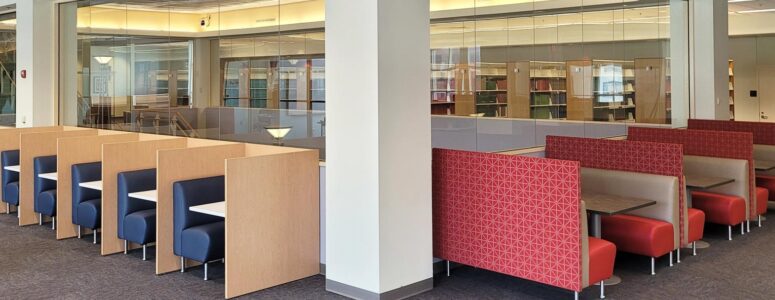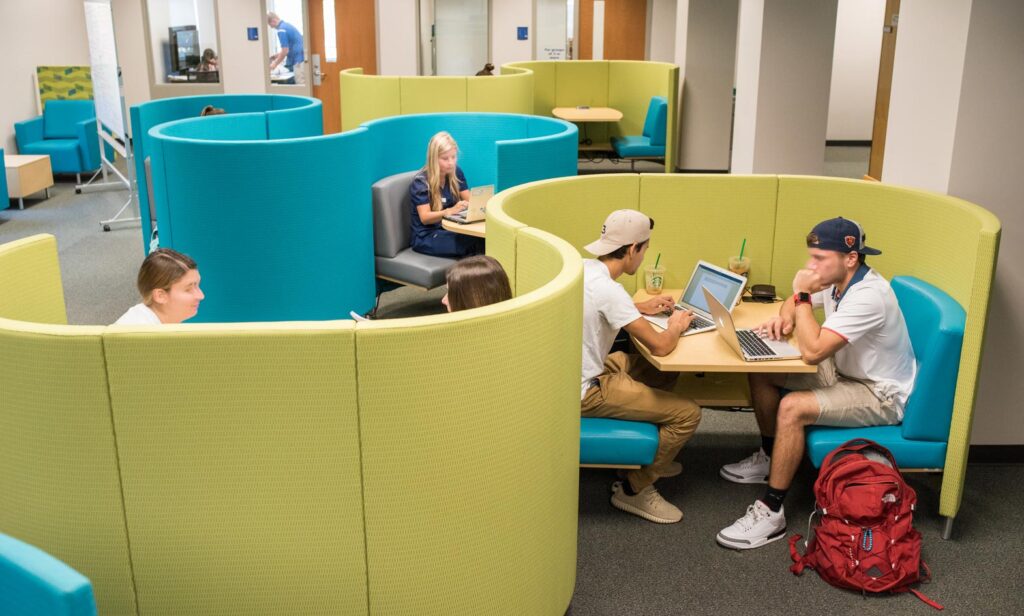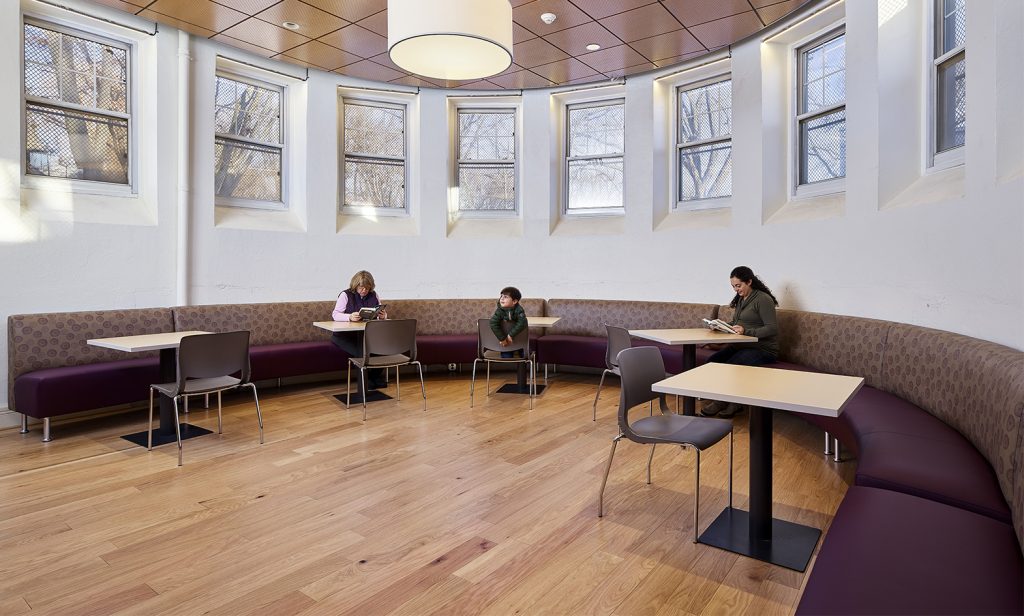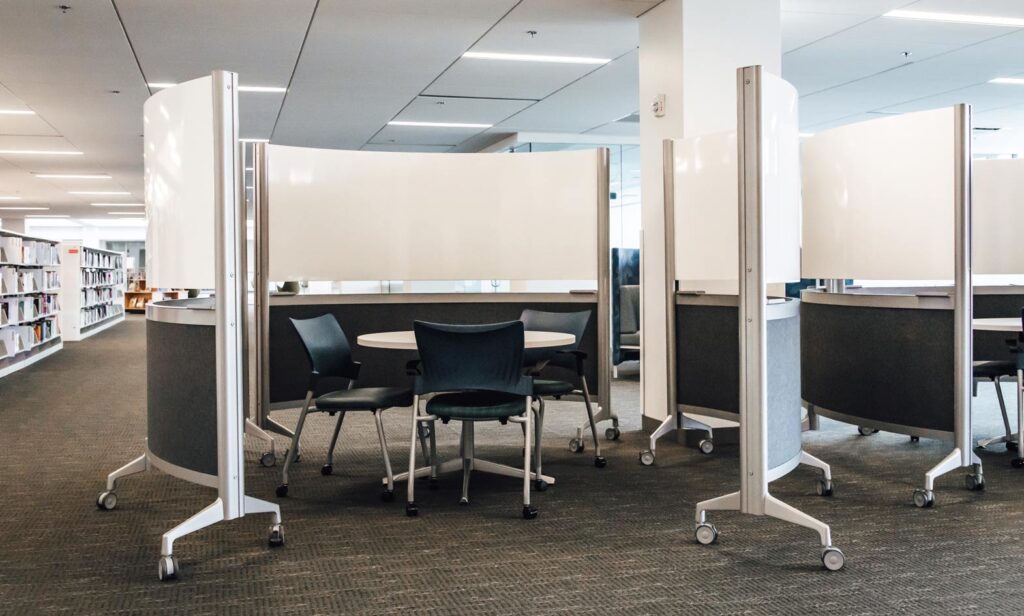
It’s time to survey your library or study lounge to observe the work patterns taking place. Note the number of patrons accomplishing individual work, seeking more privacy, and those working collaboratively, either with each other or simply in the company of each other. Finding the sweet spot and balancing collaborative with individual spaces is key to meeting the ever-evolving needs of our patrons.
In the early 2000s, tech boomed in public spaces like libraries and universities leading to installations of group media stations and computer rooms. In some spaces the adaptation was too successful, and when the pandemic hit, individual, safe, and private study and learning options were lacking.
Here are possible work patterns to note:
- Group work requiring technology
- Group work not requiring technology
- Coworking or working socially (working independently but near others)
- Group work with privacy
- Group work without privacy
- Individual work with privacy
- Individual work without privacy
Each work pattern needs furniture and a setting to match, but how do you know which solutions to offer?
Evaluate Your Space

Collaboration + Coworking in University Context with Pod Duos
The magic formula lies within identifying what your facility calls for and procuring the appropriate furniture. Each library, study room, and lounge layout is unique and your students/patrons deserve to the best possible facility where they feel productive, creative, and brilliant.
READ MORE: The Best Solutions for Collaboration Work Patterns
Walk around the room and note where chairs are left empty, where floor space lay vacant, and where furniture is being used in ways they are not intended. Your space may offer a variety of options, but if they are not being utilized for their “intended” purpose, there is opportunity for improvement.
It’s crucial to take note of what activities are happening and where/how they are taking place. If you only get solutions you think you need, you may miss out on the solutions you actually need.
Uncovering the “Why” Behind the Patterns

“We need to get more big tables.”
“Ok. Why do you need to get more big tables?”
“The big tables are always full.”
“Interesting. Why?”
“Well, it’s what we have available, and they fill up fast.”
“Ok. Is there other furniture in the space?”
“Yeah, there are some high-top tables over by the windows that actually tend to fill up first, and then students move to the big tables once those are taken.”
Consider this conversation. It’s an example of one we have on an almost daily basis around here. We could have taken the client at their initial assessment and gone right into all the large table options we have available. But we would have ended up providing the wrong solution for the patterns in that space.
If you examine the conversation again, the root of the problem is actually that students in this space actually preferred tall tables rather than big ones. But we would have never uncovered that if we hadn’t taken the time to ask “why”. (This process can often require asking “why” up to 7-10 times.)
READ MORE: Library Seating Part 2 | Furnishing a Space: How to Observe & Investigate Patterns of Use
But it doesn’t have to stop there. We can dig into this even further by asking things like: Did they prefer the tall tables because they were closer to the windows? Was it because there was easier access to power? Did the students just like sitting up higher? And the list goes on…
Experiment
In addition to asking “why,” we also have to have an appetite for failure when we’re exploring new solutions, layouts, and options for our patrons. As we experiment, we can get feedback, observe new patterns, and make better decisions on balancing collaborative with individual spaces.
For example, if you feel like your area may swing too far towards collaborative or individual furniture, it may be wise to do two things:
- Survey your patrons. If you’re not sure if patrons feel like their needs are being supported, you’ll get great insight from asking!
- Gradually balance the space. Before making a big change, experiment with a single area of your space at a time. Change it up to balance it out and see how people respond.
Getting comfortable with experimenting (and with experiments not working) will inform better decisions and how to invest in solutions that support your community for years to come.
There is an art to striking the right balance between various solutions in your space. You likely won’t get it perfect on the first try, but by continually observing the patterns in your space, asking the “why” behind those patterns, and being willing to experiment, you can offer the most effective solutions to your patrons.
Remember that it is still important to have a variety of options available to your patrons. A student may come today to have a private area to get some intense studying done, but tomorrow they may be joining friends for an impromptu group hangout. This is why we seek to strike a healthy balance: So our patrons have a wide variety of solutions for them to get the most value out of your space.
Need help understanding if you have the right balance in your space? Our team has experience making sure the right solutions are offered and would love to help. Let’s connect and find the right solutions together!


